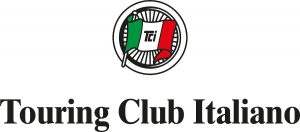Bologna. A city of many personalities. As the locals say, Bologna is “dotta, grassa, rossa e turrita”, i.e. learned, fat, red, and turreted. That is because it lays claim to, in order, the oldest university in Europe (dating back to 1088), gastronomic delights, red buildings, medieval palaces and politics, and soaring towers (in the Middle Ages there were more than 100; today around 20 remain). Then, there are around 40 kilometers of porticos and a labyrinth of underground canals built in medieval times. Although most of them were covered over in the mid-twentieth century, five can still be explored. For UNESCO, Bologna is a creative city of music, but it is also a city filled with outstanding architecture and masterpieces of art. Bologna has a surprising number of museums, some of which are real treasure troves. Then, there are the city’s squares and lively markets, the fascinating Jewish ghetto, elegant neighborhoods to the south of the city, the bohemian atmosphere of Pratello and the underground atmosphere of the Bolognina district.
The artistic heritage of CUBO
On the dividing line between two bustling neighborhoods – Bolognina, a former working-class area that has been redeveloped and is now colored by street art and animated by cultural centers, markets, shops, clubs and restaurants – and San Donato – one of the most diverse residential areas, a melting pot of cultures, students, families, elderly people, green areas and the imposing Regional government buildings and the trade fair complex – is CUBO, the Unipol Group’s business museum which contributed to the excellent reputation of these areas of the city. More than a historical archive and artistic heritage, CUBO is a multifunctional space where culture is shared, a place where people meet to share experiences and celebrate difference. Set in a futuristic location, it is a place where the social role of insurance and the identity and history of Unipol (a leading insurance group) meet culture and art through courses and workshops, educational activities and exhibitions, events and shows.
Art, intended as a form of communication and a vehicle for change and innovation, plays a central role for Unipol. At CUBO, the group preserves a valuable art collection with works spanning over a century of Italian history. About one hundred works tell the story of our twentieth century through futurists like Umberto Boccioni, Alberto Savinio, Mario Sironi, Lucio Fontana, Carlo Levi, Ennio Morlotti and Alberto Burri, to artists of the 1960s such as Francesco Lo Savio, Franco Angeli and Mario Schifano. The collection also includes the work of some of the most interesting contemporary artists: Francesca Pasquali, Davide Quayola, and Ettore Frani, among others. It is also complemented by works of foreign artists of the caliber of Marc Chagall, Georges Braque, Maria Helena Vieira Da Silva, Graham Sutherland and sculptors such as Henry Moore, Jean Robert Ipousteguy, and Beverly Pepper.
Articolo redatto in collaborazione con 